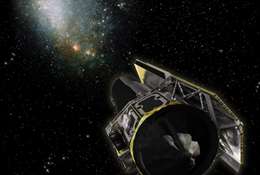Heading for blast off

(Phys.org) -- Construction of a pioneering plasma thruster – an engine that could be used to power satellites to Mars – and a space simulation facility that will aid the development of the first Australian satellites is underway at Mt Stromlo Observatory.
The project is being driven by the Space Plasma Power and Propulsion (SP3) Laboratory of the Research School of Physics and Engineering in close collaboration with the Research School of Astronomy and Astrophysics at The Australian National University.
The plasma thruster and the space simulation facility are expected to be ready by mid-next year. The plasma thruster could be propelling a test satellite into space within the next two years.
The initial missions will investigate the possibility of using the plasma thruster to send out-of-date satellites into ‘graveyard’ orbits. The long-term aim is to scale the prototypes up to allow flights to Mars. This would be the first time a satellite with a plasma engine has been tested.
Professor Rod Boswell, of the Space Plasma Power and Propulsion Laboratory, said that the plasma thruster project was significant for the Australian space community because it allowed for the development of completely Australian satellites.
Professor Boswell added that there was already a lot of interest and requests from the Australian space community – and beyond – to use the space simulation facility once it was up and running.
“A number of Australian universities teach aerospace and mechantronics. Up until now, there’s been nowhere for them to test their spacecrafts – they have to go overseas. So this will really be providing a major service, not only in Australia, but also in Southeast Asia.”
The project is a collaboration between European firm EADS-Astrium, the world’s largest aerospace and aeronautic company, the SP3 Laboratory at ANU and Surrey Space Centre at the University of Surrey, UK. It is being funded to the tune of $3.1million by the Department of Industry, Innovation, Science, Research and Tertiary Education.
Provided by Australian National University










.jpg)






